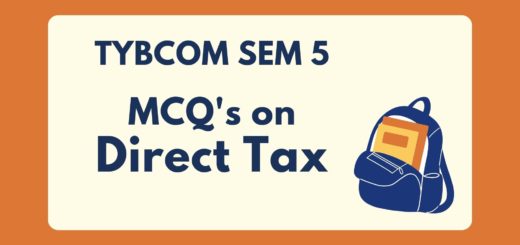Variance Analysis – Labour Variances | Standard Costing
Table of Contents
Variance Analysis – Labour Variances
Standard Costing
Standard costing is a perfect system of controlling costs and measuring efficiency and development. It is a technique of cost reduction and cost control. It helps to provide valuable guidance in several management functions such as formulating policies, determining price levels, etc. The essence of standard costing is to set objectives and targets to achieve them, to compare the actual costs with these targets. Standard Costing is used to ascertain the standard cost under each element of cost, i.e., materials, labors, and overhead. It can eliminate all kinds of waste. Through the application of this costing, it can be ascertained whether or not the activities of production are going on according as the pre-determined plan.
You learn many topics of accounting from our YouTube channel TYBCOMSCHOLARSZILLA
Definition of Standard Costing :
• A standard costing system is a method of cost accounting in which standard costs are used in recording a certain transaction and the actual costs are compared with the standard cost to learn the amount and reason for variations from the standard.
‐ W.B. Lawrence
Standard costing involves the preparation of cost based on pre‐determined standards and continuous comparison of actual with them for the purpose of guidance and control.
‐ D. Joseph
Advantages of Standard Costing:
- Proper Planning
- Efficient Cost Control
- Motivational Factor
- Comparison of standard and actual
- Inventory Control
- Helpful in Budgeting
- Helps Formulate Policies
- Eliminates Wastage
Limitations of Standard Costing:
- Costly System
- Difficulties in Fixation of Standard
- Not useful for Service Industry
- Consistency of Standard
- Unsuitable for Non‐standardised Products
- Difficulties for Small Industries
- Discouragement for Workers
Objectives of Standard Costing:
- To institute a control mechanism on all the elements of costs that affect production and sales
- To measure different operational efficiencies and check the wastages
- To improve the delegation of authority and generate a sense of responsibility among the employees
- To develop a cost-consciousness in the employees
- To presume the production costs, sales and profit
- To avail the benefits of ‘Management by exception.’
- To bring about a vivid progressive vision and sagacious decision making at each managerial level.
Importance of Variance:
There is a lot of importance in the analysis of variance. There are many objects fulfilled
with their analysis. Without analysis of variance, there is no use of standard
costing. The important points of variances are as under:
1) Check and control of wastage are possible.
2) It improves the efficiency of the organization by the use of standard costing.
3) It exercises control over all cost centers including departments, individuals, and so on.
4) Responsibility of a particular person or department can be fixed.
5) In the prediction of production cost, sales and profit, variance analysis is very useful.
6) On the basis of variance analysis, a delegation of authority could be made effective.
7) Variance analysis is easy to introduce, apply, and orient the result.
8) Various operational efficiencies can be measured.
Meaning of Variances:
Initially, standards for all elements of costs should be set, and then the actual cost should be compared with the standard costs to obtain the variances. Some deviations are found when actual performances are recorded and compared with the standard set. These deviations are known as variances.
“A variance is the difference between a standard cost and the comparable actual cost incurred during a period”
‐ C.I.M.A. London
Labour Variances :
These variances include Labour Cost Variances, Labour Rate Variances, Labour Efficiency Variances, Labour Mix Variances, and Labour Yield Variances.
(1) Labour Cost Variances (LCV)
• It is the difference between the Standard labour costs and the actual labour costs for the production
achieved.
• As the cost of labour is determined by labour time and wages, the labour cost variance is composed of either or both of variances relating to labour time and labour rate
• If the Standard Cost is higher, the variation is favourable and vice versa
=Standard labour cost for actual output- Actual labour output
= (Standard hours for actual output * Standard rate per hour) – (Actual hours * Actual rate per hour)
= (SH X SR) – (AH X AR)
(2) Labour Rate Variances (LRV)
• It is the difference between the standard and the actual direct Labour Rate per hour for the total hours worked.
• The reasons for labour rate variance can be more efficient and skilled workers might have been employed and higher wages may have been paid to them, new workers not being allowed full normal wage rates, use of the different method of payment, higher wages paid on account of overtime for urgent work.
• LRV will be an uncontrollable variance as labour rates are usually determined by demand and supply conditions in the labour market, backed by negotiation skills of the trade union.
• If the standard rate is higher, the variance is Favourable and vice versa.
=(Standard rate- Actual rate) X Actual Hours
= (SR-AR) X AH
(3) Labour Efficiency Variances (LEV)
• It is the difference between the standard hours for the actual production achieved and the hours actually worked, valued at the standard labour rate.
• The reasons for labour efficiency variance can be defective and bad material, lack of proper supervision or stricter supervision than specified, poor working conditions, breakdown of plant & machinery, failure of power etc.
• When the workers finish the specific job in less than the standard time, the variance is favourable. If the workers take more time than the allotted time, the variance is adverse.
=(Standard hours for actual output- Actual hours) X Standard rate
= (SH-AH) X SR
(4) Labour Mix Variances (LMV)
This variance arises if during a particular period the grades of labour used in production are different from those budgeted.
• It is the difference between the standard composition of workers and the actual gang of workers.
• It enables the management to study how much of the labour variance occurred due to the changes in the composition of labour force
=(Revised Standard hours- Actual Hours) X Standard Rate
= (RSH- AH) X SR
RSH = Total time of actual workers
—————————————- X Standard Time
Total time of standard workers
(5) Labour Yield Variances (LYV)
• It is the variation in labour cost on account of an increase or decrease in yield or output as compared to the relative standard.
= (Actual Yield- standard yield from actual output) X Standard labour cost per unit of output


